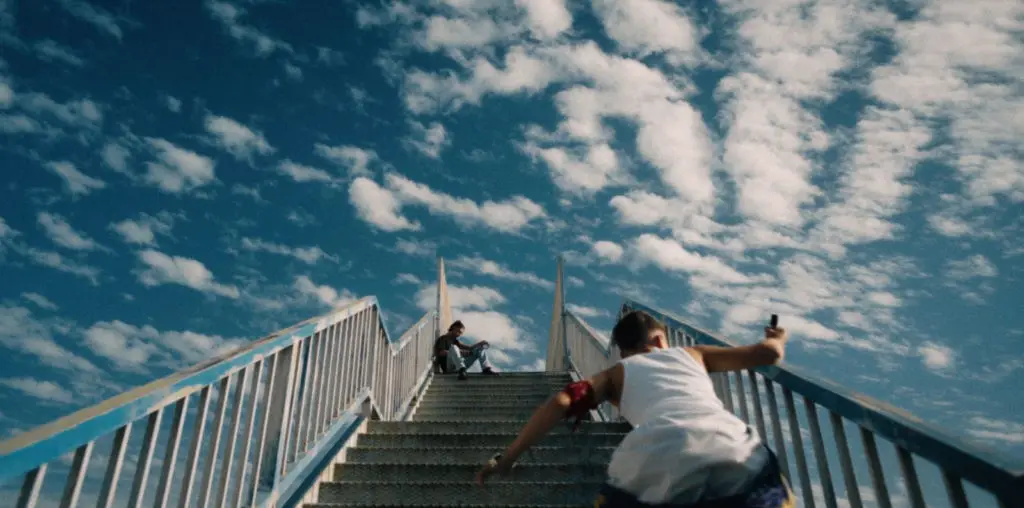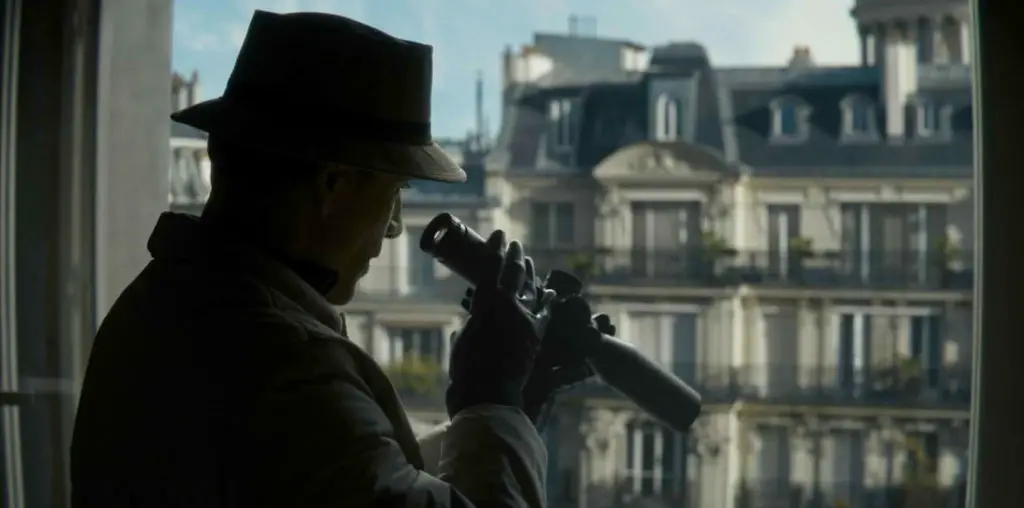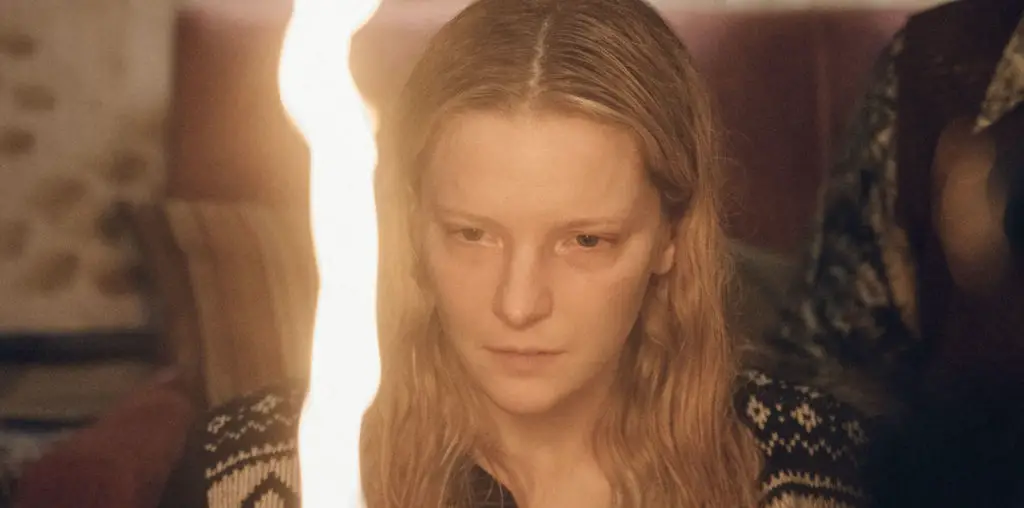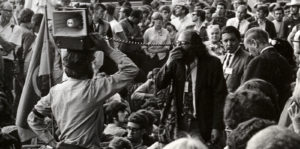
There was a detail in Nolan’s Oppenheimer that might have caught your attention. They design their secret New Mexico community around an existing school. This, just a few years prior, was the unhappy home of one William S. Burroughs. He was sent there by his rich family to toughen up and was later to become one of Allen Ginsberg’s closest friends.
Burroughs subsequently spoke of his horror at finding out he had such an intimate connection with the patch of desert turned into the Cold War by its surreal collective of spooks and scientists. A nihilistic intrusion into the past itself, he vowed The Bomb was what drove The Beats, their queer and strung-out voices constantly aware of its threat and shadow.
There are some gripping sequences within this documentary that really bring home where Ginsberg and his friends sat within the politics and power of the age. Perhaps the best illustration is from the 1967 Democratic Convention, which looked to be tilting into a pitched battle between the hippies and the police until Ginsberg hijacked the whole thing with hours of Buddhist chanting over the speakers. The Ginsberg presented here is an earnest and humane figure, a kind of charming mixture of rabbi and seer.
It’s interesting to note that the documentary was originally released almost to the year that the Internet was birthed into popular culture and is now perhaps marginally less of a goldmine than it was back then, as some of the rare footage here has been piling up on Youtube for years now. Interestingly, when the film was completed, Ginsberg himself, upon seeing it, remarked, “So, that’s Allen Ginsberg?” which maybe shows how much more narrow our media were then, even in an age of maturing mass communication, even if you were famous. He still reacted as if it were his first look in the mirror.
“The Bomb was what drove The Beats, their queer and strung-out voices constantly aware of its threat and shadow…”
The film was made back when many of the figures in his life were still alive to discuss key moments. The interviews are clear and open and are a virtual brain trust of some of the great writers and thinkers of their time, all endorsing Ginsberg in their ways. Director Jerry Aronson makes the wise choice to present his subject formally by dividing things into decades. This lets us weigh the nature and impact of the art against the politics and pop of the timeline it played in, a vital component in appreciating his story and ours, especially around the fifties and sixties.
Speaking of which, my favorite sequence in this documentary, a clip lifted from Firing Line, has Ginsberg singing at William F Buckley while playing the harmonium. Buckley’s face becomes a frantic battleground of honest joy and deep suspicion. Ginsberg just plays for minutes, chocolate-drop eyes shining at his host in a stunningly awkward display of brotherly love. It’s magnificent.
This is a good documentary, giving a thorough account of its subject, organised in an accessible way. Re-released twice, if you can get this on physical media (Region 1 only) then do. It comes with hours of extra footage from all the key participants.
Chock full of interviews with some of the great artists of the age, the film also gives you a chance to hear the man himself read large chunks of his most celebrated works to the camera, in particular Howl and Kaddish. It is hard to imagine a better documentary on Ginsberg. It’s also a pretty thoroughgoing account of The Beats too, and a bit of a must-have for any fan of 20th-century literature.
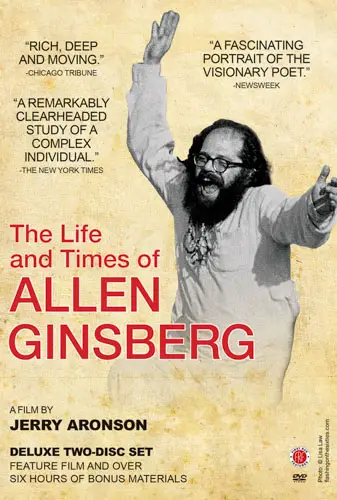
"…a must have for any fan of 20th-century literature..."
